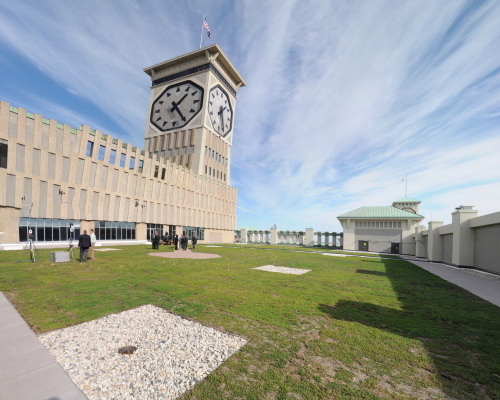
e-Newsletter | 01/23/2013
|
|
Milwaukee – 2113. What will this region look like in 100 years? Not too many people think about this. We accept what we have without daring our futures. In early January, I had the honor to judge the "Future Cities” competition. This competition consists of elementary and middle school students, who work feverishly on their own time to imagine the future cities in which they may live. As I listened and learned from these young people, I heard them passionately describe public green space, green roofs, bioswales, porously paved streets, mass transit, and renewable energy. There was no hard engineering – just young people telling us where they hope to live in the future. Fast forward three days to a workshop I attended that was hosted by the Milwaukee Water Council. Here, I heard international engineering experts discuss the same subjects. This discussion was supported by case studies of actual projects from around the world showing similar sustainable approaches in practice. Two separate events, a vastly different set of presenters, yet both had the same vision for the future. The convergence of these two separate discussions made me think about Milwaukee 100 years from now. Would Milwaukee be a City of the Future? Were there steps that needed to be taken now that could move us further down the paths described by the students and the engineers? Then it struck me; we are already moving down this path. From the moment Milwaukee drew its first drop of water from Lake Michigan and returned it to the Lake to be used again; since the early 1900's when Charles B. Whitnall first formed the County Park system, providing us all open public spaces; when, in 1926, this region first produced Milorganite®, turning a liability into an asset; or when this region constructed the deep tunnel system, which has quietly served as the backbone of our sewer system, capturing 98.3% of all the contaminated water that enters it, allowing us to clean that water and return it to Lake Michigan, the Milwaukee region has long been on the path toward being a City of the Future. Today, we continue on that path. Whether it is the City of Greenfield installing porous pavement in their municipal parking lot, the City of Milwaukee installing curb-cut bioswales to capture street runoff, the City of Mequon preserving open space at the Mequon Nature Center, MMSD tapping wasted landfill gas as a renewable power source, or MMSD ripping concrete out of our waterways, we are all making small steps toward the future vision. Another step occurred, just after the 2013 New Year, when the State Department of Natural Resources issued MMSD's new operating permit. This is the first wastewater permit in the country to require green improvements. This requirement illustrates that the green infrastructure MMSD has been implementing for 12 years is the right approach to managing water, is necessary to address a wide range of social issues, and will galvanize increased collaboration toward a more sustainable future. This permit is a significant milestone for this region. By the way, MMSD funding for green roofs just opened up for 2013. Read more and apply through this link: http://www.h2ocapture.com/Learn/Funding-Programs/Green-Roof-Project. Listening to the finalists at the Future Cities competition and thinking of all in the opportunities for this region's water world, I realized that, when it comes to water management, I already live in a City of the Future.
|
|
 The green roof at Rockwell Automation in Milwaukee helps protect Lake Michigan. |
|
Milwaukee Metropolitan Sewerage District260 W. Seeboth Street | Milwaukee, WI 53204Find MMSD on FacebookClick here to subscribe Click here to unsubscribe |
|
